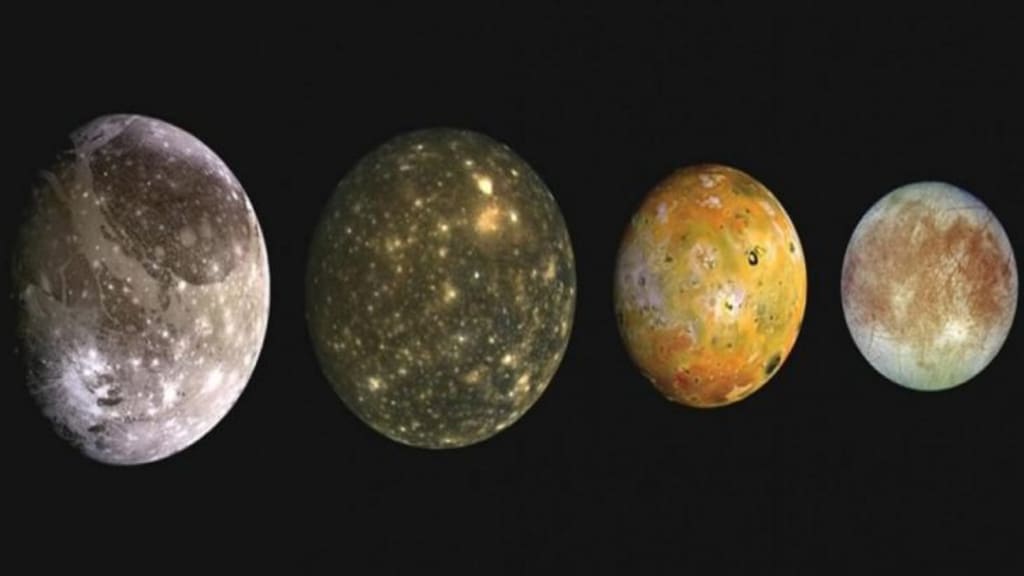10 Strange Moons in our solar system
Strange Moons in our solar system

Natural satellites of planets are mystic and amazing celestial bodies. They revolve around the plants and can differ in numbers. A planet can have no moon like Mercury and Venus in our solar system while others can have a large number of them like Jupiter which possesses 79 of them. While some moons are amazing others can be mysterious and strange too.
What is the weirdest moon in our solar system? Following are 10 strange moons in our solar system.
- Phobos
Phobos is a non-spherical irregular moon that orbits Mars. The orbit of the moon is as strange as its name. Ares' son inspired the name of the moon. It revolves so fast that it can complete three orbits in a single day. Phobos may appear to be an uninteresting object in space, but what makes it interesting is its fateful collision with its planet. The moon approaches the planet at a rate of 1.8 metres every hundred years.
- Callisto
With a diameter of 4821 km, it is Jupiter's second largest moon and the third largest in the solar system. Galileo Galilei discovered it in 1610. It takes 16.7 days to orbit Jupiter. It should be a planet based on its diameter, but it is most likely a satellite of Jupiter. This is one of the locations where you can see the oldest landscape in the solar system, which dates back 4 billion years. The reason for this is the moon's inability to perform geologic activities and replenish its surface.
- Nereid
This moon is under Neptune’s possession. It takes 360 Earth days to orbit its planet. It can be as close as 841,100 km and as far away as 5,980,200 km. It is mysterious in a way of its own. Its orbit has led astronomers to believe that it was captured from the Kuiper Belt.
- Titan
Titan is the solar system's second largest moon. It has a dense atmosphere, so dense that nitrogen and methane clouds obscure the solid core. UV radiation from the sun causes reactions between gases to occur, resulting in the formation of organic molecules. The Cassini probe discovered ethane and methane lakes and rivers. These rivers were discovered to be the result of rain from orange clouds.
- Iapetus
Despite its distance from its planet, this moon is tidally locked to begin with. This satellite was deceptive and difficult to locate. It mysteriously became brighter and fainter as it completed its orbit of Saturn due to its tidally locked position. Cassini noticed the difference and predicted that the moon would have two faces.
- Mimas
The first look of this moon might scare some of you, because its shape resembles that of a fictional space station. The reason behind this shape is its massive impact crater. The crater measures 130 km with a depth of 5 km. This crater is named after its founder William Herschel who founded it in 1789. The body that made the crater almost ripped it apart but somehow the moon survived that catastrophic event.
- Enceladus
It is one of the brightest objects in our solar system because its water ice structure reflects nearly 100% of the Sun's light, but that isn't the only amazing thing about it. It is frequently referred to as the most scientifically compelling location in our solar system because it has one of the most promising conditions for the existence of life outside of our planet. Cassini discovered something amazing about this moon in 2005.
- Atlas
Saturn’s other inner moon, Atlas has an equatorial ridge giving the moon its distinctive flying saucer shape. The moon has an average radius of 15 km. It was discovered in 1980 by using images from Voyager 1 during its flight by Saturn. It completes one orbit in 14.4 hours.
- Charon
It is Pluto's largest and closest moon. It was found in 1978. It would be a dwarf planet on its own if it wasn't orbiting Pluto. Pluto and Charon are so large that they are sometimes referred to as a double dwarf planet system.
- Dactyl
A Galileo probe discovered it in 1995. This moon has a diameter of less than a mile and is a natural satellite of the asteroid Ida, a Koronis asteroid found in the belt between Mars and Jupiter. Before this discovery, scientists had no evidence that asteroids could have moons, but since then, 24 more have been discovered to orbit asteroids.
About the Creator
Enjoyed the story? Support the Creator.
Subscribe for free to receive all their stories in your feed. You could also pledge your support or give them a one-off tip, letting them know you appreciate their work.






Comments
There are no comments for this story
Be the first to respond and start the conversation.